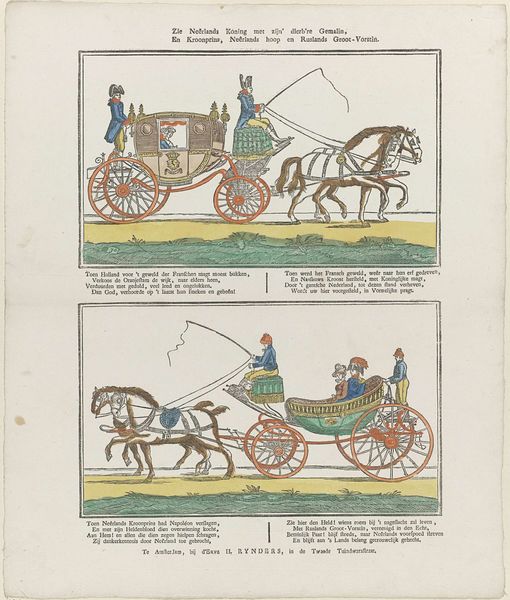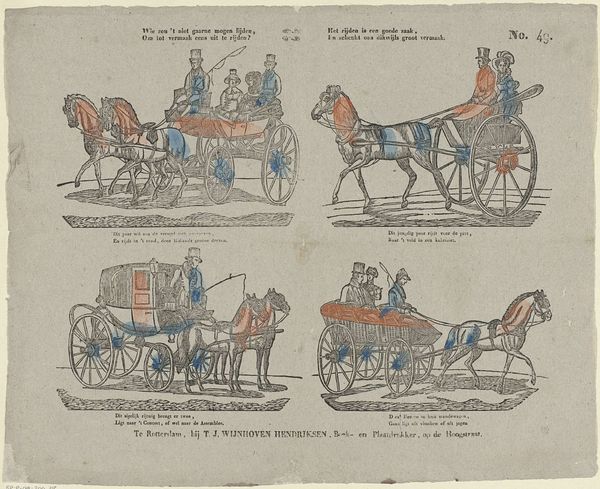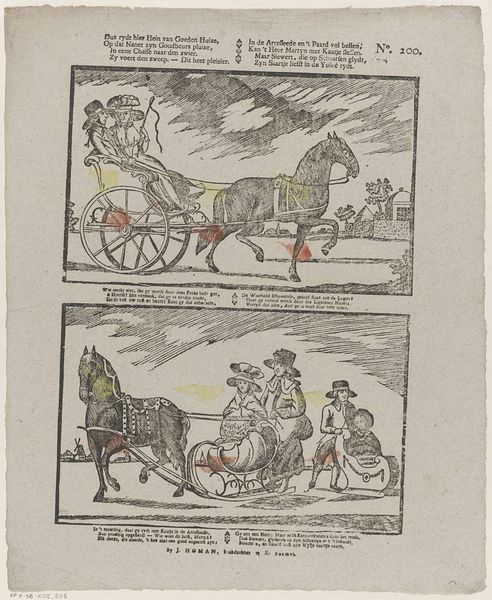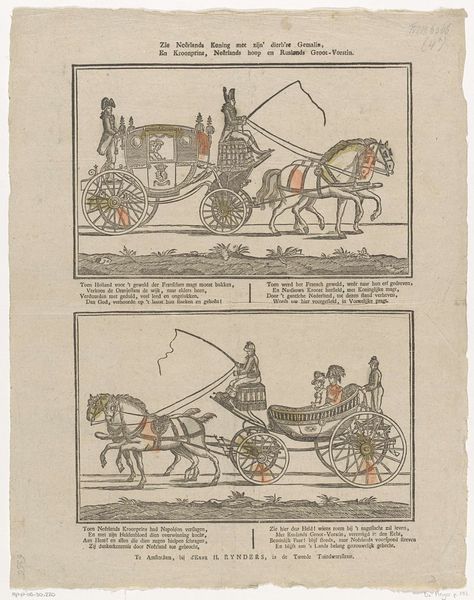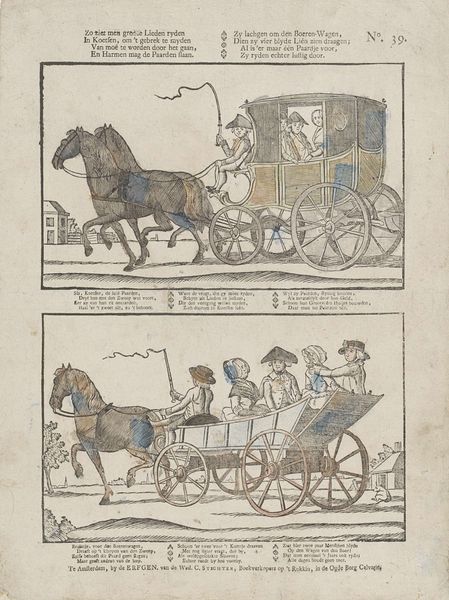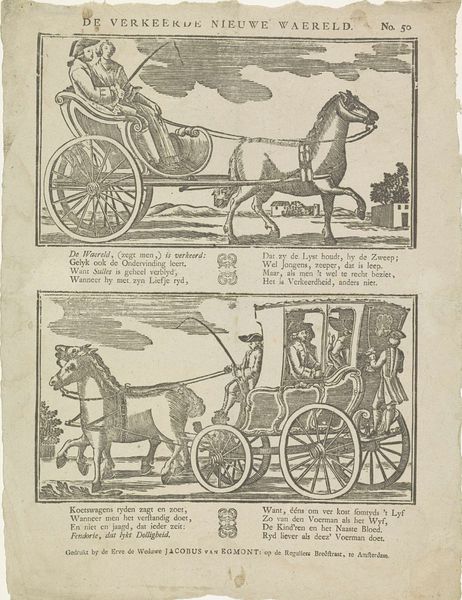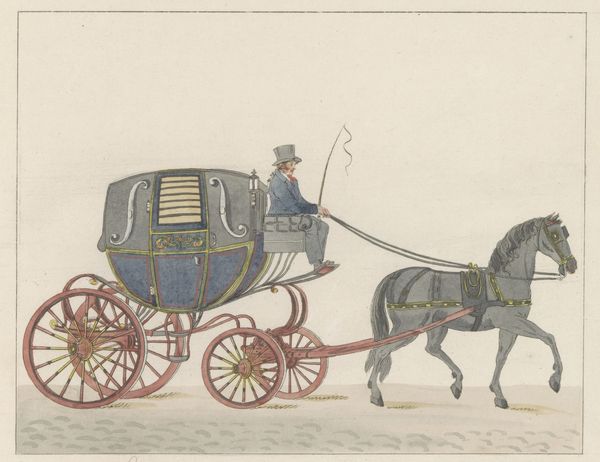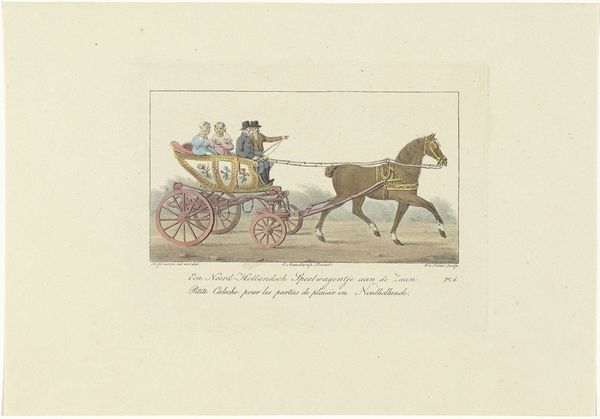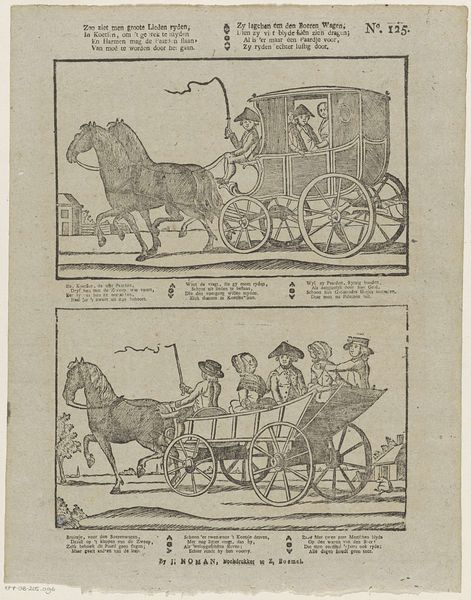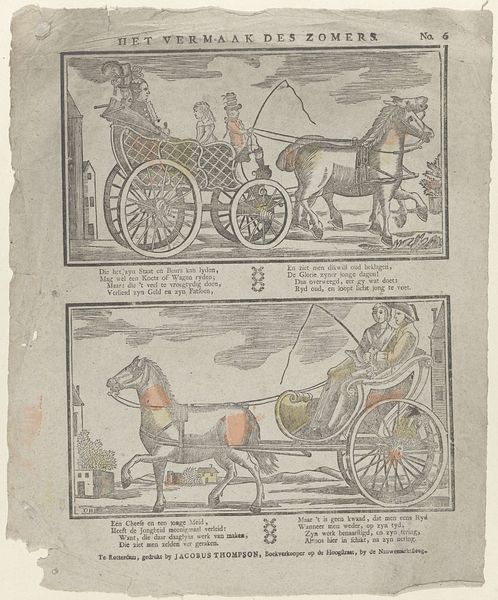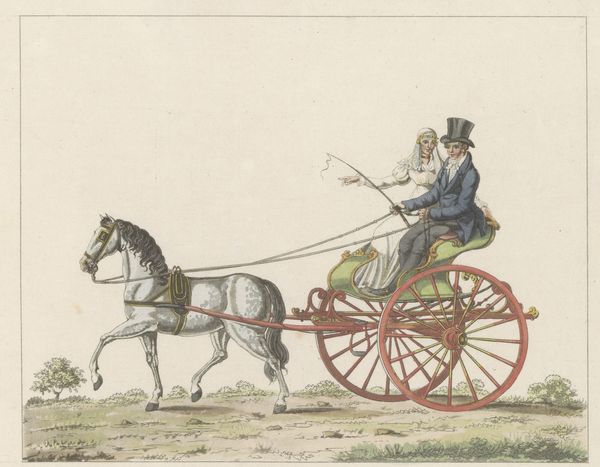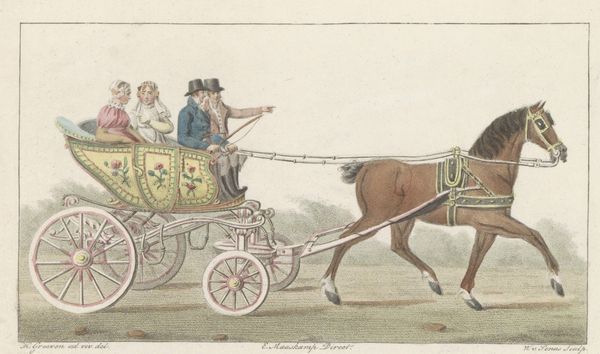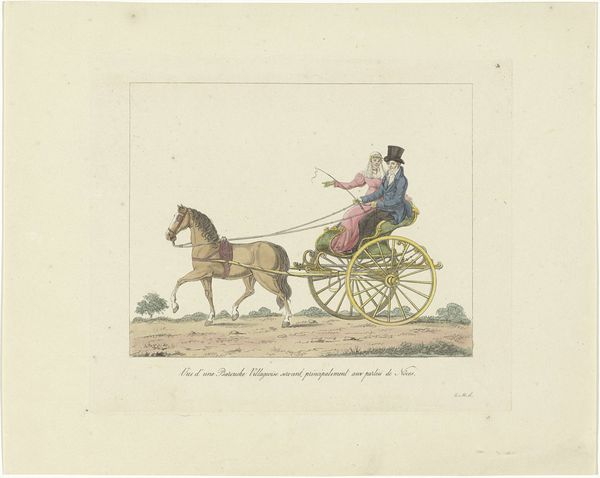
Zie Neêrlands, koning met zijn dierb're gemalin, / En kroonprins, Neêrlands hoop en Ruslands groot-vorstin 1831 - 1854
0:00
0:00
lithograph, print
#
lithograph
# print
#
caricature
#
romanticism
#
genre-painting
#
history-painting
Dimensions: height 405 mm, width 322 mm
Copyright: Rijks Museum: Open Domain
Editor: This lithograph, "Zie Neêrlands, koning met zijn dierb're gemalin, / En kroonprins, Neêrlands hoop en Ruslands groot-vorstin," made between 1831 and 1854 by Jan Oortman, depicts carriages and figures. The print feels quite symbolic. How might we interpret its visual language in relation to Dutch history and identity? Curator: The carriages themselves become potent symbols of power and status. Think of the visual echoes – or ruptures – they create with earlier depictions of royal processions. Carriages were, of course, a common motif, but here they appear almost like stage props, burdened with the weight of expectation and perhaps even satirizing the pomp and circumstance associated with monarchy. The contrast between the upper and lower scenes interests me. Editor: I see that contrast, the different styles of carriage too, but I’m not sure I understand its significance entirely. Curator: The choice to show two different styles of carriages invites a deeper consideration of social hierarchy. What expectations did viewers at the time project on the royal family? And how did this print perhaps either confirm or subvert those expectations? How do genre painting and caricature speak together? Editor: That's fascinating, the idea of subverting expectations. I hadn’t considered the print might be poking fun at royalty, even subtly. Curator: The positioning and interaction of figures contribute meaning, yes? This seemingly simple genre scene, therefore, holds layers of socio-political commentary accessible through its carefully constructed visual symbols. Look, also, at the landscape and compare how its minimal presence changes meaning across each frame. Editor: So, it's not just a record of an event or figures, but a cultural artifact reflecting specific values and tensions of the period. Thank you! Curator: Precisely! It shows how a seemingly straightforward image can offer a powerful lens through which to understand a society’s hopes, anxieties, and cultural memory.
Comments
No comments
Be the first to comment and join the conversation on the ultimate creative platform.
